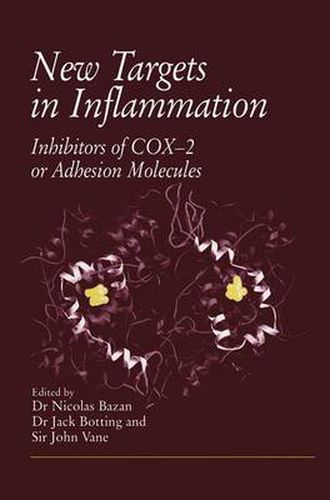Readings Newsletter
Become a Readings Member to make your shopping experience even easier.
Sign in or sign up for free!
You’re not far away from qualifying for FREE standard shipping within Australia
You’ve qualified for FREE standard shipping within Australia
The cart is loading…






This title is printed to order. This book may have been self-published. If so, we cannot guarantee the quality of the content. In the main most books will have gone through the editing process however some may not. We therefore suggest that you be aware of this before ordering this book. If in doubt check either the author or publisher’s details as we are unable to accept any returns unless they are faulty. Please contact us if you have any questions.
For the past 100 years the mainstay of therapy for rheumatoid arthritis (RA) has been aspirin or other drugs of the non-steroid anti-inflammatory group. In 1971 Vane pro posed that both the beneficial and toxic actions of these drugs was through inhibition of prostaglandin synthesis. The recent discovery that prostaglandins responsible for pain and other symptoms at inflammatory foci are synthesized by an inducible cyclooxygenase (COX-2) that is encoded by a gene distinct from that of the consti tutive enzyme (COX-I) provided a new target for therapy of RA. A drug that would selectively inhibit COX-2 would hopefully produce the symptomatic benefit provided by existing NSAIDs without the gastrointestinal and renal toxicity due to the inhibition of COX-I. Drugs selective for COX-2 are now available. Experimental studies have shown them to be effective with minimal toxicity, and in clinical trials gastric and renal toxicities are less. Highly selective COX-2 inhibitors, perhaps designed with knowledge of the crystal structures of COX-I and COX-2, are also available. Other experimental studies, including those in animals lacking effective genes for COX-lor COX-2 and in experimental carcinomas, suggest there is still much to be learned of the pathophysiological functions of these enzymes. The inflammatory response is a complex reaction involving many mediators that derive from white blood cells, endothelial cells and other tissues. Preliminary data have revealed that inhibitors of the cytokines and adhesion molecules that play a crucial role in the migration of white cells to inflammatory sites may be useful in RA.
$9.00 standard shipping within Australia
FREE standard shipping within Australia for orders over $100.00
Express & International shipping calculated at checkout
This title is printed to order. This book may have been self-published. If so, we cannot guarantee the quality of the content. In the main most books will have gone through the editing process however some may not. We therefore suggest that you be aware of this before ordering this book. If in doubt check either the author or publisher’s details as we are unable to accept any returns unless they are faulty. Please contact us if you have any questions.
For the past 100 years the mainstay of therapy for rheumatoid arthritis (RA) has been aspirin or other drugs of the non-steroid anti-inflammatory group. In 1971 Vane pro posed that both the beneficial and toxic actions of these drugs was through inhibition of prostaglandin synthesis. The recent discovery that prostaglandins responsible for pain and other symptoms at inflammatory foci are synthesized by an inducible cyclooxygenase (COX-2) that is encoded by a gene distinct from that of the consti tutive enzyme (COX-I) provided a new target for therapy of RA. A drug that would selectively inhibit COX-2 would hopefully produce the symptomatic benefit provided by existing NSAIDs without the gastrointestinal and renal toxicity due to the inhibition of COX-I. Drugs selective for COX-2 are now available. Experimental studies have shown them to be effective with minimal toxicity, and in clinical trials gastric and renal toxicities are less. Highly selective COX-2 inhibitors, perhaps designed with knowledge of the crystal structures of COX-I and COX-2, are also available. Other experimental studies, including those in animals lacking effective genes for COX-lor COX-2 and in experimental carcinomas, suggest there is still much to be learned of the pathophysiological functions of these enzymes. The inflammatory response is a complex reaction involving many mediators that derive from white blood cells, endothelial cells and other tissues. Preliminary data have revealed that inhibitors of the cytokines and adhesion molecules that play a crucial role in the migration of white cells to inflammatory sites may be useful in RA.